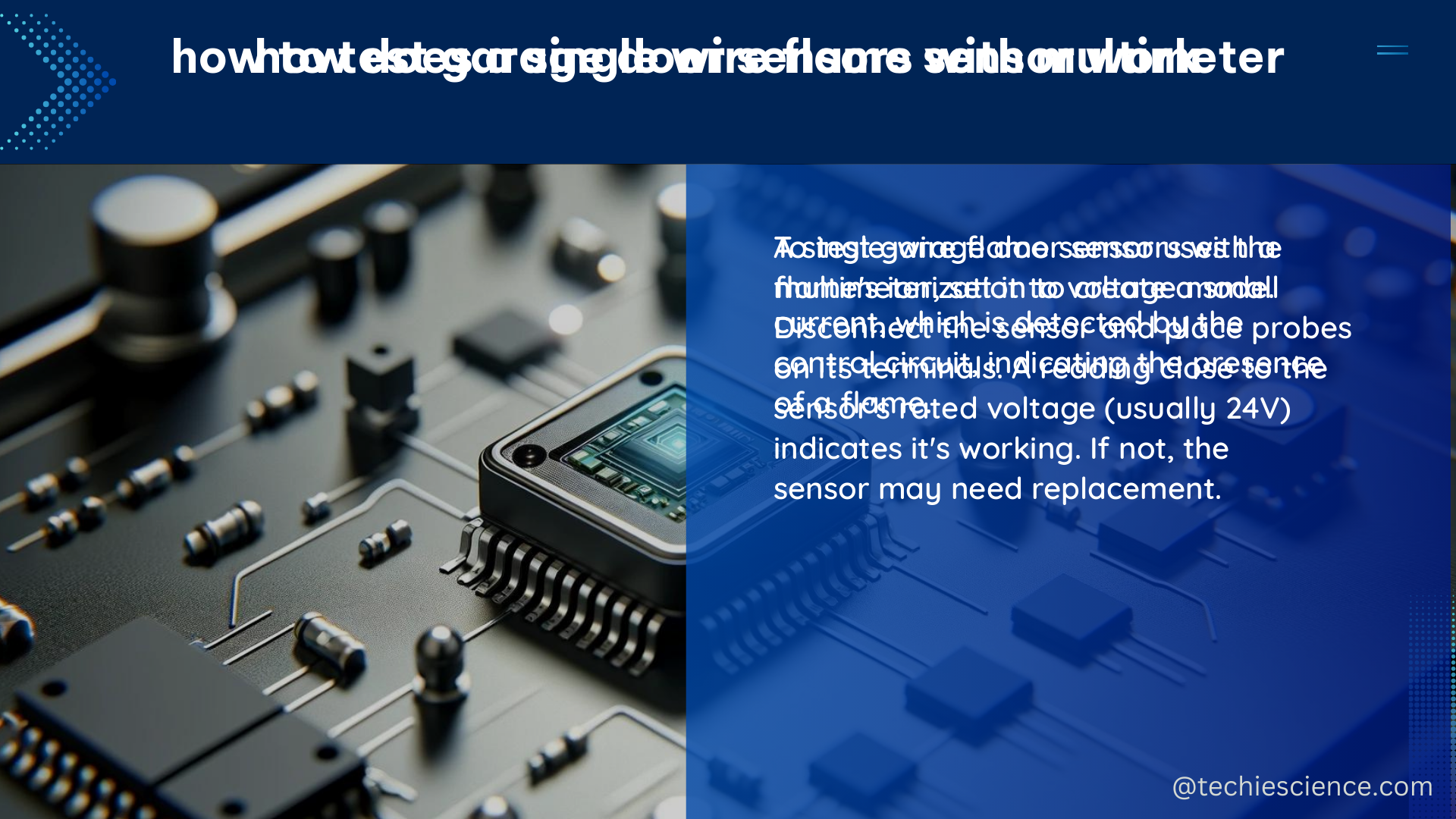A single wire flame sensor works by utilizing the flame’s ability to ionize carbon particles, which then conduct an electrical current. Unlike a thermocouple, this type of sensor is a flame rectification sensor that uses the flame as a conductor between the sensor rod and a grounded metal surface, such as the nozzle of a flame jet.
Understanding the Principle of Operation
When a flame is present, an AC voltage is applied to the flame sensor rod. This voltage causes a DC current to flow from the rod, through the flame, and to the ground. The flame sensor rod has nonlinear characteristics that allow it to reliably distinguish between a proper gas flame and an open, short, or resistance caused by soot or moisture between the electrode and ground.
Technical Specifications

The technical specifications of a single wire flame sensor include:
- AC Voltage: The sensor operates on an AC voltage between 80 and 300 volts.
- DC Current: The DC current is measured using a micro-amp meter connected in series with the sensor.
- Flame Envelope: The flame envelope must completely consume the space between the sensor rod and the ground area to ensure continuity.
Sensor Rod Surface Treatment
The flame sensor rod may have a special surface treatment to prevent the buildup of deposits that could reduce conductivity. However, issues with cleaning the rod can arise if sand cloth is used, as the leftover grit can lead to a coating and poor conductance once heated.
Testing a Flame Sensor
To test a flame sensor, follow these steps:
- Ensure the furnace is properly grounded.
- Verify the polarity is correct.
- Confirm the rod is positioned so that it will be covered by the flame.
- Use a meter that reads in the microamp scale with a minimum resolution of 0.10.
- Connect the meter leads in series with the sensor.
- When the flame is lit, the meter should read between 0.5 and 10 microamps (μA), depending on the furnace.
Troubleshooting Common Issues
If the flame sensor is not functioning correctly, consider the following troubleshooting steps:
- Cleaning the Sensor Rod: Avoid using sand cloth, as it can leave behind grit that can lead to a coating and poor conductance once heated. Instead, use a soft cloth or brush to gently clean the rod.
- Checking for Proper Grounding: Ensure the furnace is properly grounded, as this is crucial for the flame sensor to function correctly.
- Verifying Polarity: Make sure the polarity of the sensor connections is correct.
- Positioning the Sensor Rod: Ensure the rod is positioned so that it will be fully covered by the flame.
- Selecting the Appropriate Meter: Use a meter that can measure in the microamp scale with a minimum resolution of 0.10.
By understanding the technical details and following the proper testing and troubleshooting procedures, you can ensure your single wire flame sensor is working correctly and providing reliable flame detection for your HVAC system.
References:
- How does a flame sensor or thermocouple operate with just one wire? – Electronics Stack Exchange
- Flame Sensing – The Basics – HVAC School
- flame sensor, how does it work? – HVAC-Talk
- How to Detect Flame with Flame Sensor and Arduino? – Seeed Studio
- How can I bench test a Flame Sensor (Flame Rectification) – Electronics Stack Exchange

The lambdageeks.com Core SME Team is a group of experienced subject matter experts from diverse scientific and technical fields including Physics, Chemistry, Technology,Electronics & Electrical Engineering, Automotive, Mechanical Engineering. Our team collaborates to create high-quality, well-researched articles on a wide range of science and technology topics for the lambdageeks.com website.
All Our Senior SME are having more than 7 Years of experience in the respective fields . They are either Working Industry Professionals or assocaited With different Universities. Refer Our Authors Page to get to know About our Core SMEs.